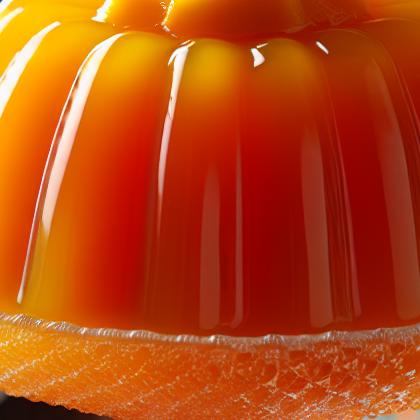Mango Gelatin

Gelatin or gelatine (from Latin: gelatus meaning "stiff", "frozen") is a translucent, colorless, brittle (when dry), flavorless solid substance, derived from collagen obtained from various animal by-products. It is commonly used as a gelling agent in food, pharmaceuticals, photography, and cosmetic manufacturing. Substances containing gelatin or functioning in a similar way are called gelatinous. Gelatin is an irreversibly hydrolysed form of collagen, and is classified as a foodstuff. It is found in most gummy candies as well as other products such as marshmallows, gelatin dessert, and some ice cream, dip and yogurt. Household gelatin comes in the form of sheets, granules, or powder. Instant types can be added to the food as they are; others need to be soaked in water beforehand. Gelatin has E number E441.
Mango gelatin Pairs With:
Mango gelatin Properties:
| Food Property | Type | Description |
|---|---|---|
| Flavor Profile | Sweet | Mango gelatin has a naturally sweet taste derived from the ripe mangoes used in the recipe. |
| Texture | Firmness | Mango gelatin has a firm texture due to the gelatin setting and solidifying the mixture. |
| Moisture | Mango gelatin has a moist texture, providing a refreshing and juicy mouthfeel. | |
| Nutritional Value | Macronutrients | Mango gelatin contains carbohydrates from the mango puree and sugar, along with some protein from the gelatin. |
| Micronutrients | Mango gelatin is rich in vitamin C and vitamin A from the mangoes. | |
| Color | Natural Pigments | Mango gelatin has a vibrant yellow-orange color from the natural pigments present in ripe mangoes. |
| Aroma | Volatile Compounds | Mango gelatin has a fragrant aroma from the ripe mangoes, adding to its overall sensory appeal. |
Food Pairing App - Version 1.2.0
